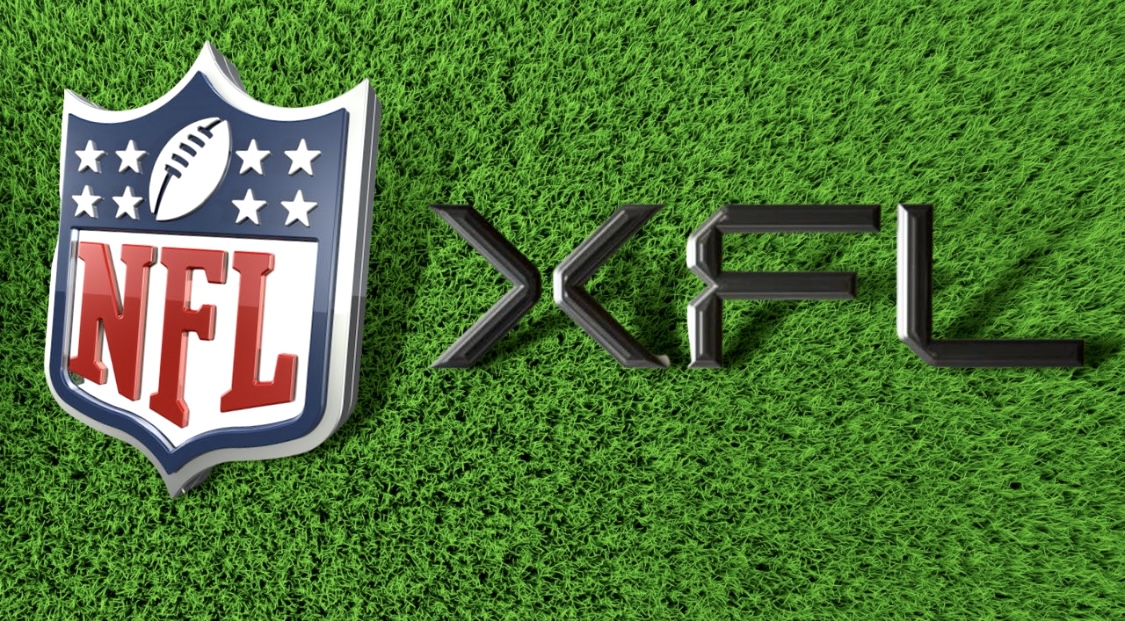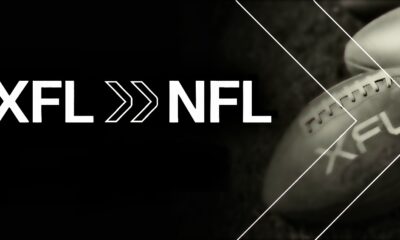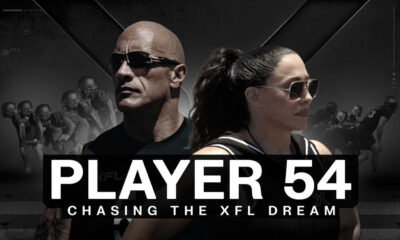
The XFL is not looking to challenge the NFL. Let’s face it; no entity out there can measure up to the National Football League. However, that doesn’t mean that the XFL’s existence in the pro football landscape can’t help challenge the NFL to evolve as a league and product.
The Differences Between The XFL And NFL
For those who caught the XFL back in 2020 and are now watching the returning league’s games on ABC/ESPN/FX. The differentiation on the field and off presented by the XFL, as opposed to the NFL, is innovative and refreshing.
Both leagues have a lot of matching rules. But there are some tweaks in the XFL game and presentation that definitely look like winning solutions for the NFL.
Some of the all-access features in the huddle and sidelines may never see the light of day in the NFL. But there is a layer of openness and transparency that is so refreshing during XFL games. And if instituted by the NFL, it could help the league break free from some of its rigidness. Or at least, maybe get some of the conspiracy crowd to take off their tin foil hats temporarily.
XFL INSTANT REPLAY/CHALLENGE SYSTEM
- Centralized replay with all plays subject to review from Replay Official
- The replay may correct errors on non-reviewable plays, player safety during the game, and any issue in the last five minutes of regulation plus overtime.
- A head coach may challenge one on-field ruling per game, including those involving a foul or potential foul.
- Designated members make the final ruling of the officiating department in a central location.
This is something the NFL needs to see. They got it right, and right in front of us. https://t.co/ZaDD3Mr9hM
— Dave Myers (@DM3BIB) February 20, 2023
A good amount of XFL 2023 innovations seem like no-brainer ideas for the NFL. Like the ability to challenge one penalty a game or the XFL’s fumble into an end zone not registering as a touchback.
However, a few rules and technology innovations would fall under the Marty McFly category of “Guess you guys aren’t ready for that yet. But your kids are going to love it”.
In the not in a million years category. There are two XFL rules for instance, that I doubt will ever make it’s way to the NFL. The first is the XFL’s double forward pass rule, which allows two passes, if the first is behind the line of scrimmage. And the second is the XFL’s one foot in bounds constitutes a catch rule. Something that exists in college, but will likely never transfer over to the NFL. It would sure make referee’s jobs and replay easier though.
Let’s get into some of the other XFL rules and innovations: And see if they can fit into the modern-day or future NFL.
XFL Communications System
This is the most overlooked difference between the XFL and NFL. And it’s something that is way ahead of its time. At some point, NFL and college teams will fully embrace what is, in some respects, a cheat code.
Perhaps it’s more of a 2033 idea rather than 2023.
Here’s how it works and differentiates. In the NFL, the coach/coordinator’s communication with their quarterback cuts off after the play call is relayed into the headset, and the QB then relays the call to his teammates.
In the XFL, not only does the communication between a coach and quarterback continue until the snap of the ball. But multiple players have receivers in their helmets to communicate with their coaches. An OC can tell his wide receiver what to do as he lines up based on the coverage being seen before the snap.
That sounds like an unfair advantage for the offense, right? However, the defense also has the same communication capabilities. With multiple defenders communicating with their head coach/defensive coordinator. So it evens things out.
Ultimately, it eliminates the need for long huddles and gives players and coaches time to adjust on the fly. The XFL has figured out a way to avoid competition issues regarding opposing teams intercepting calls. It’s not an easy task with play calls airing on live TV. But the advancement and usage of technology seem like the next frontier for pro football.
XFL TIERED EXTRA POINTS
- No extra point kicks after touchdowns
- Tiered extra points.
- Teams have three run/pass-only options for extra points following a touchdown
- 2-yard line = one point; 5-yard line = two points; 10-yard line = three points
- The defense is awarded the same points for a turnover returned for a score.
NFL Verdict: It seems highly unlikely that the NFL will ever opt to eliminate extra point kicks and add tiered point conversions. However, there was a time not too long ago when the NFL didn’t have two-point conversions in its games. The NFL has tried to make extra-point kicks more dramatic and challenging by pushing them back further. But it’s arguably the most boring and inconsequential play in the NFL. The XFL’s three-tiered conversion system is a fun idea and adds an extra layer of strategy for teams. But it likely won’t ever see the light of day in the NFL.
XFL Kickoff
XFL Teams begin the kickoff play five yards apart – with the kicking team at the opponent’s 35-yard line and returning team at its 30-yard line. The play doesn’t start until the returner fields the kickoff.
The XFL’s kickoff looked awkward in 2020 and still does now for many traditionalists.
However, the kickoff accomplishes two things: Firstly, it eliminates the foregone conclusion of modern-day touchbacks, and lastly, it’s an excellent aid to player safety. The league rule penalizes teams if they don’t kick the ball to a returner. By placing the ball at the kicking team’s 45. Everything about the setup is designed to ensure a return.
The XFL kickoff was formatted and tested with players and universities dating back to 2018.
Although, in the current iteration of the league, we haven’t seen kick returns for touchdowns yet. Like the two seen in five weeks of play in 2020. But the return rate is 98 percent and eliminates the full-speed collisions and injuries that occur on the play.
As we start @XFL2023 just want to shout out my man @schwartzsteins who was the architect behind so many of our rules innovations.
— Dean Blandino (@DeanBlandino) February 18, 2023
NFL Verdict: We may come to a day when the NFL abandons the kickoff completely. But arbitrarily giving a team possession on their own 25 or 30 to start a game or half and eliminating kick returns seems like two weaker alternatives. The NFL should absolutely consider the XFL kickoff.
Three XFL Rules I really like:
— Coach Dan Casey (@CoachDanCasey) February 20, 2023
1. Tiered PAT
Run or Pass from the:
2-yard line = one point
5-yard line = two points
10-yard line = three points
2. Options to keep the ball
4th and 15 conversion from own 25-yard line (4th quarter only)
3. Kickoff
Teams begin play five yards… pic.twitter.com/myh5rvSeKf
XFL OPTIONS TO KEEP THE BALL
- Teams have two options to keep the ball after scoring:
- Traditional onside kick (any time during the game) or
- A 4th and 15 conversion attempt from own 25-yard line (4thquarter only) (Defenses takes over possession if the convert fails at the point of football)
Okay the XFL’s 4th and 15 conversion option kinda rules
— Mina Kimes (@minakimes) February 19, 2023
Like the XFL’s kickoff rule, the league’s options in the fourth quarter on a 4th and 15 conversion attempt adds an exciting alternative to the outdated, dangerous and ineffective onside kick. The kickoff and onside kick in today’s modern-day NFL are almost non-plays. Kickoffs are rarely returned, and onside kicks are seldom successful. And both contribute to unnecessary injuries.
In the XFL: Instead of an onside kick, the trailing team can maintain possession with a 4th-and-15 play from its own 25-yard line.
— Ari Meirov (@MySportsUpdate) February 19, 2023
It just worked for the St. Louis BattleHawks.
This was brought to NFL owners in the past but didn't get enough votes.pic.twitter.com/qNP5QukWMy
NFL Verdict: The NFL is more likely to adopt this “onside kick” alternative. There could be some tweaks. But the risk-reward element of the play is exciting and will change the final chapter of NFL games forever. The option is a better alternative than the onside kick.
The NFL competition committee could once again look into an onside kick alternative that would give teams the chance to maintain possession with a 4th-and-15 play. The proposal has had growing support in recent years and it’s being used in the XFL. Discussions will continue.
— Ari Meirov (@MySportsUpdate) February 27, 2023
XFL OVERTIME
- Consists of alternating attempts from the opponent’s 5-yard line.
- Three attempts per team (two points per score) or until the winner is decided.
Interestingly enough through 28 games in the XFL, in 2020, and now 2023. We have yet to see an XFL game go into overtime. But college football, and the USFL have already tried a variation of the XFL’s overtime.
NFL Verdict: Until we see the XFL overtime in play. It’s challenging to see the NFL adopt this at all. The original idea behind the XFL overtime had two parts: one ensuring that both teams get the ball with a chance to win. And it was designed to present a quick resolution to games to fit into a broadcast window of three hours. The NFL has tried to create a more “competitive friendly” OT, at least in their playoff format. By allowing both teams a possession if there isn’t a defensive score. Ultimately, I don’t see the XFL OT making its way to the fall league, even as a regular season option.
XFL GAME TIMING
- The XFL operates with a 35-second play clock, which begins following the previous play.
- The clock starts following incomplete passes and out-of-bounds plays prior to a two-minute warning of either half.
- The clock will stop following first downs after a two-minute warning of either half.
- 10-minute halftime splits the first and second halves.
- Three timeouts per team per half
The XFL’s game timing rules seem more suited for their pro league, than the ultimate one, the NFL.
The whole premise of the XFL game rules is to add more plays of consequence/action and eliminate plays of inaction. It’s a delicate balance of how the league speeds up down time, while also slowing down the clock in key moments.
Closing Thoughts on How The XFL Is Different from NFL
The NFL is an amazing product. Nothing beats it. The league is untouchable in many respects. But that doesn’t mean that the NFL can’t improve its game, and the way it is presented to fans.
They have to be open minded and forward thinking. They don’t have to embrace all the XFL’s concepts. But capturing the spirit of what XFL 2023 is trying to accomplish, using technology and innovation is a good thing.
Unleash the Action: Sign up for XFL Insider and Fuel Your Passion for Football!
I am a pro football writer who has extensively covered and reported on multiple leagues over the years. I started covering the XFL back in 2001. You can follow me on Twitter @byMikeMitchell

1 Comment
Leave a Reply
Cancel reply
Leave a Reply
This site uses Akismet to reduce spam. Learn how your comment data is processed.
XFL Kickoff
XFL News Alerts
USFL and XFL Merger: A Deep Dive into the Historic Collaboration
Latest Podcast
-


XFL Podcast
/ 3 months agoXFL-USFL Merger Insights: Houston’s Future, Draft News, Player Movement – Ep. 216
Welcome to Episode 216 of the “XFL Week In Review,” your premier destination for...
By Mark Perry









ChillerCally
March 1, 2023 at 8:54 am
IMO, to bolster the league (and to stay afloat) the XFL and USFL should merge and create an official minor league. Get the NFL to totally back this entire thing which will bring more eyes in the spring time. The markets almost already line up with the exception of Houston. Move a team here and there. Start out with the current 16 team structure and split the affiliations between two NFL teams, then expand to 32 if necessary. The NFL would totally benefit from being able to develop some younger players that are 1-3 years in that can’t quite crack the depth chart or may be a bit of a project; especially when it comes to the QB position. Its better than having these players ride the bench or practice squad all year and see no real competitive playing time. See PJ Walker as a prime example. I don’t think he would have ever left 3rd string tier if it wasn’t for him showcasing his skills on national TV. Now he’s a solid backup who has seen significant playing time which the NFL needs more of.